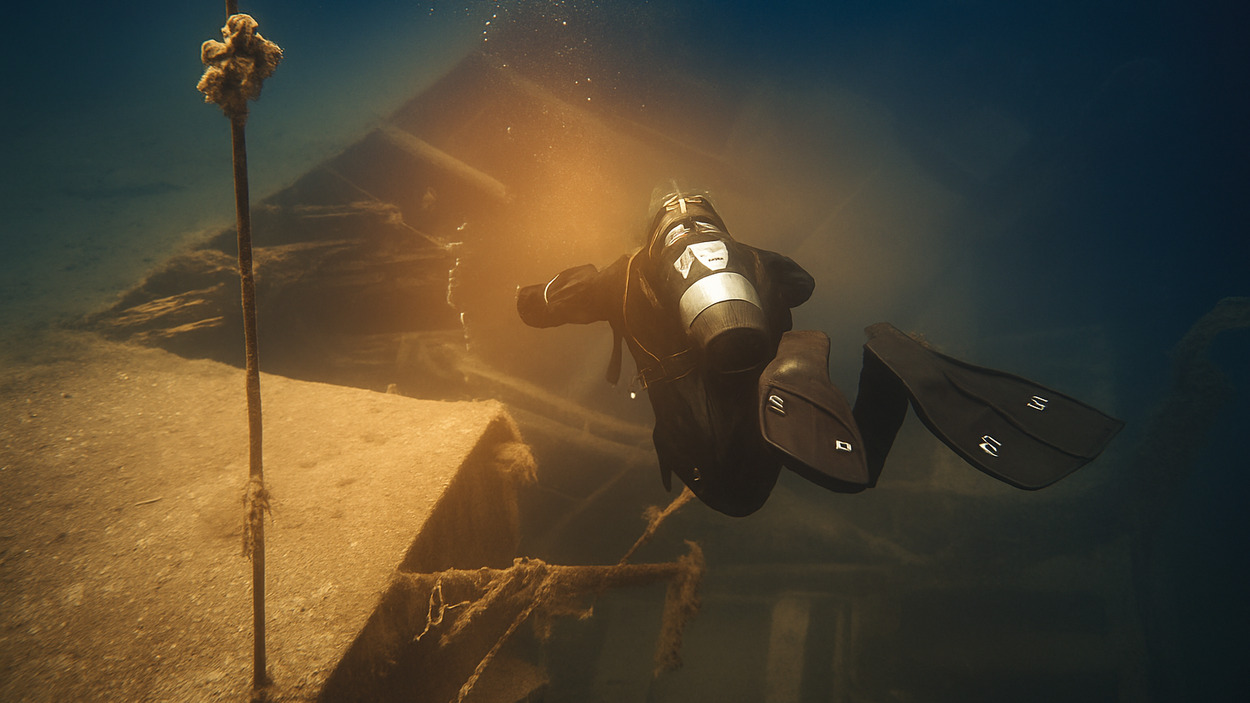Science
This Is Why You Overeat: Scientists Point to One Habit
23 October 2025

After two thousand years of searching, scientists are one step closer to solving one of history's greatest riddles. An extraordinary discovery has been made in Egypt. Archaeologists claim they have found the location where Cleopatra's tomb—the legendary queen whose fate still fascinates the world—may rest.
For centuries, the question, “Where did Cleopatra rest?” gave historians and archaeologists no peace. The Queen of Egypt—a ruler, a lover, a politician, and a symbol of female power—vanished from the pages of history without a trace. Now, after two thousand years, researchers claim they are finally closer to the truth.
Cleopatra VII Philopator, born around 69 BCE in Alexandria, was the last queen of ancient Egypt from the Ptolemaic dynasty. She ascended to the throne in 51 BCE with her brother and, concurrently, husband, Ptolemy XIII. However, he quickly pushed her away from the throne.
She fled to Syria, gathered an army, and returned to the country, leveraging the help of Julius Caesar. A political alliance and a personal relationship bonded them—they had a son, Caesarion. Following Caesar’s death, Cleopatra allied herself with Mark Antony, with whom she tried to create a power equal to Rome. Their defeat at the Battle of Actium in 31 BCE sealed the fate of Egypt.
A year later, Cleopatra committed suicide, likely using poison, ending the era of the pharaohs and the independence of her kingdom.
Her story did not end with her death. Two thousand years later, researchers are still searching for her traces.
Dr. Kathleen Martínez from the University of Santo Domingo has been following a trail for nearly two decades that may lead her to the greatest discovery of the 21st century. Collaborating with National Geographic, she has been investigating the ruins of Taposiris Magna—an ancient city hidden west of Alexandria—since 2005. She believes Cleopatra’s tomb may rest there.
What the archaeologists discovered at Taposiris Magna exceeded their wildest expectations. Early in the excavations, Martínez’s team found the first clue—coins bearing the image of the Queen of Egypt. That was the moment when hope took real shape.
Since then, the researchers have uncovered more and more clues: busts, amphorae, ritual lamps, and hundreds of small artifacts. These objects piece together the image of Cleopatra’s ancient world like a puzzle. In 2022, scientists announced a sensational find—a tunnel that looked like an entrance to a forgotten world. It is over a kilometer long, a “miracle of geometry,” that disappears into the underwater depths.
But that was just the beginning. With each passing year, the earth unveiled more secrets. Two years later, a sacred trench was discovered, and in 2025, a sunken port from Cleopatra’s time was found. When divers descended beneath the surface, they saw a sight straight out of another world.
The structures form an ancient pier and a temple dedicated to the goddess Isis—the very goddess with whom Cleopatra identified. Martínez believes that it is precisely here, in a symbolic and sacred place, that Cleopatra’s tomb might be located after her death. If she is right, the history of Egypt has just added its most extraordinary chapter.
However, not everyone is convinced that this is the end of the mystery. For some scientists, this trail sounds too good to be true.
Even in the world of science, where every discovery breeds hope, voices of doubt emerge. Professor Sitta von Reden, an ancient historian from the University of Freiburg, believes that Cleopatra was buried in Alexandria—in the area of the former royal palace, which now rests underwater. In her opinion, it is there, in the very heart of the royal city, that she may have found her eternal rest.
In turn, Professor Andrew Meadows, a classicist from the University of Oxford, noted in an email to Live Science‘s editorial team that no ancient sources or documents point to Taposiris Magna.
“So far, I have seen no archaeological evidence that would confirm this,” the scholar wrote.
Despite the skepticism of some scientists, Dr. Kathleen Martínez has not lost faith in her find.
“No one will tell me that Cleopatra is not at Taposiris Magna. To state that, you would have to excavate the entire area and find nothing. I will not stop. I feel that Cleopatra’s tomb is closer than ever,” says Dr. Kathleen Martínez, quoted by National Geographic, which first reported the sensational discovery.
After thousands of years, in a location destroyed by earthquakes and submerged by the sea, the fight to find the grave of one of the world’s most famous women continues.
The discovery of the sunken port is just the beginning. Scientists plan further underwater research that may reveal what truly lies beneath layers of sand and sediment.
If Martínez’s assumptions are confirmed, we will witness one of the greatest archaeological discoveries of the 21st century. This find will unite legend, science, and history into a single story about a woman. A woman who has never ceased to fascinate the world.
Cleopatra is not just history—she is a legend that is reborn every few years.
Read this article in Polish: Pod wodą odkryto starożytny port. To tam może spoczywać Kleopatra